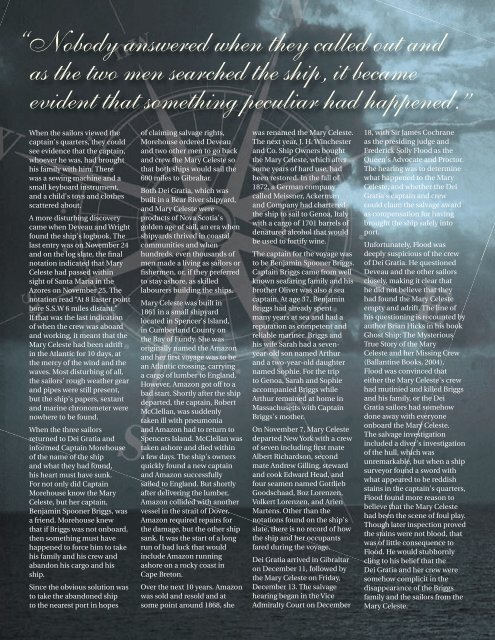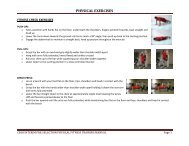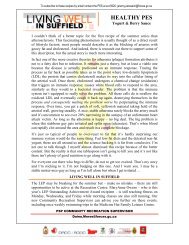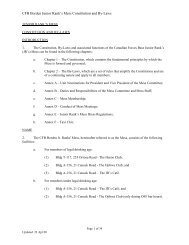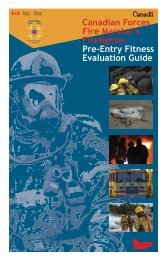We Care!
We Care!
We Care!
Create successful ePaper yourself
Turn your PDF publications into a flip-book with our unique Google optimized e-Paper software.
“Nobody answered when they called out and<br />
as the two men searched the ship, it became<br />
evident that something peculiar had happened.”<br />
When the sailors viewed the<br />
captain's quarters, they could<br />
see evidence that the captain,<br />
whoever he was, had brought<br />
his family with him. There<br />
was a sewing machine and a<br />
small keyboard instrument,<br />
and a child's toys and clothes<br />
scattered about.<br />
A more disturbing discovery<br />
came when Deveau and Wright<br />
found the ship's logbook. The<br />
last entry was on November 24<br />
and on the log slate, the final<br />
notation indicated that Mary<br />
Celeste had passed within<br />
sight of Santa Maria in the<br />
Azores on November 25. The<br />
notation read “At 8 Easter point<br />
bore S.S.W 6 miles distant.”<br />
If that was the last indication<br />
of when the crew was aboard<br />
and working, it meant that the<br />
Mary Celeste had been adrift<br />
in the Atlantic for 10 days, at<br />
the mercy of the wind and the<br />
waves. Most disturbing of all,<br />
the sailors' rough weather gear<br />
and pipes were still present,<br />
but the ship's papers, sextant<br />
and marine chronometer were<br />
nowhere to be found.<br />
When the three sailors<br />
returned to Dei Gratia and<br />
informed Captain Morehouse<br />
of the name of the ship<br />
and what they had found,<br />
his heart must have sunk.<br />
For not only did Captain<br />
Morehouse know the Mary<br />
Celeste, but her captain,<br />
Benjamin Spooner Briggs, was<br />
a friend. Morehouse knew<br />
that if Briggs was not onboard,<br />
then something must have<br />
happened to force him to take<br />
his family and his crew and<br />
abandon his cargo and his<br />
ship.<br />
Since the obvious solution was<br />
to take the abandoned ship<br />
to the nearest port in hopes<br />
of claiming salvage rights,<br />
Morehouse ordered Deveau<br />
and two other men to go back<br />
and crew the Mary Celeste so<br />
that both ships would sail the<br />
600 miles to Gibraltar.<br />
Both Dei Gratia, which was<br />
built in a Bear River shipyard,<br />
and Mary Celeste were<br />
products of Nova Scotia's<br />
golden age of sail, an era when<br />
shipyards thrived in coastal<br />
communities and when<br />
hundreds, even thousands of<br />
men made a living as sailors or<br />
fishermen, or, if they preferred<br />
to stay ashore, as skilled<br />
labourers building the ships.<br />
Mary Celeste was built in<br />
1861 in a small shipyard<br />
located in Spencer's Island,<br />
in Cumberland County on<br />
the Bay of Fundy. She was<br />
originally named the Amazon<br />
and her first voyage was to be<br />
an Atlantic crossing, carrying<br />
a cargo of lumber to England.<br />
However, Amazon got off to a<br />
bad start. Shortly after the ship<br />
departed, the captain, Robert<br />
McClellan, was suddenly<br />
taken ill with pneumonia<br />
and Amazon had to return to<br />
Spencers Island. McClellan was<br />
taken ashore and died within<br />
a few days. The ship's owners<br />
quickly found a new captain<br />
and Amazon successfully<br />
sailed to England. But shortly<br />
after delivering the lumber,<br />
Amazon collided with another<br />
vessel in the strait of Dover.<br />
Amazon required repairs for<br />
the damage, but the other ship<br />
sank. It was the start of a long<br />
run of bad luck that would<br />
include Amazon running<br />
ashore on a rocky coast in<br />
Cape Breton.<br />
Over the next 10 years. Amazon<br />
was sold and resold and at<br />
some point around 1868, she<br />
was renamed the Mary Celeste.<br />
The next year, J. H. Winchester<br />
and Co. Ship Owners bought<br />
the Mary Celeste, which after<br />
some years of hard use, had<br />
been restored. In the fall of<br />
1872, a German company<br />
called Meissner, Ackerman<br />
and Company had chartered<br />
the ship to sail to Genoa, Italy<br />
with a cargo of 1701 barrels of<br />
denatured alcohol that would<br />
be used to fortify wine.<br />
The captain for the voyage was<br />
to be Benjamin Spooner Briggs.<br />
Captain Briggs came from well<br />
known seafaring family and his<br />
brother Oliver was also a sea<br />
captain. At age 37, Benjamin<br />
Briggs had already spent<br />
many years at sea and had a<br />
reputation as competent and<br />
reliable mariner. Briggs and<br />
his wife Sarah had a sevenyear-old<br />
son named Arthur<br />
and a two-year-old daughter<br />
named Sophie. For the trip<br />
to Genoa, Sarah and Sophie<br />
accompanied Briggs while<br />
Arthur remained at home in<br />
Massachusetts with Captain<br />
Briggs's mother.<br />
On November 7, Mary Celeste<br />
departed New York with a crew<br />
of seven including first mate<br />
Albert Richardson, second<br />
mate Andrew Gilling, steward<br />
and cook Edward Head, and<br />
four seamen named Gottlieb<br />
Goodschaad, Boz Lorenzen,<br />
Volkert Lorenzen, and Arien<br />
Martens. Other than the<br />
notations found on the ship's<br />
slate, there is no record of how<br />
the ship and her occupants<br />
fared during the voyage.<br />
Dei Gratia arrived in Gibraltar<br />
on December 11, followed by<br />
the Mary Celeste on Friday,<br />
December 13. The salvage<br />
hearing began in the Vice<br />
Admiralty Court on December<br />
18, with Sir James Cochrane<br />
as the presiding judge and<br />
Frederick Solly Flood as the<br />
Queen's Advocate and Proctor.<br />
The hearing was to determine<br />
what happened to the Mary<br />
Celeste, and whether the Dei<br />
Gratia's captain and crew<br />
could claim the salvage award<br />
as compensation for having<br />
brought the ship safely into<br />
port.<br />
Unfortunately, Flood was<br />
deeply suspicious of the crew<br />
of Dei Gratia. He questioned<br />
Deveau and the other sailors<br />
closely, making it clear that<br />
he did not believe that they<br />
had found the Mary Celeste<br />
empty and adrift. The line of<br />
his questioning is recounted by<br />
author Brian Hicks in his book<br />
Ghost Ship: The Mysterious<br />
True Story of the Mary<br />
Celeste and her Missing Crew<br />
(Ballantine Books, 2004).<br />
Flood was convinced that<br />
either the Mary Celeste's crew<br />
had mutinied and killed Briggs<br />
and his family, or the Dei<br />
Gratia sailors had somehow<br />
done away with everyone<br />
onboard the Mary Celeste.<br />
The salvage investigation<br />
included a diver's investigation<br />
of the hull, which was<br />
unremarkable, but when a ship<br />
surveyor found a sword with<br />
what appeared to be reddish<br />
stains in the captain's quarters,<br />
Flood found more reason to<br />
believe that the Mary Celeste<br />
had been the scene of foul play.<br />
Though later inspection proved<br />
the stains were not blood, that<br />
was of little consequence to<br />
Flood. He would stubbornly<br />
cling to his belief that the<br />
Dei Gratia and her crew were<br />
somehow complicit in the<br />
disappearance of the Briggs<br />
family and the sailors from the<br />
Mary Celeste.


